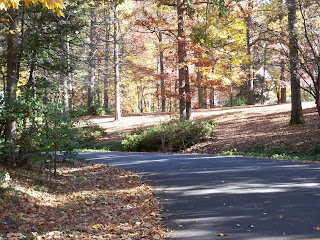Proportion and Scale
A trip through the suburbs this weekend helped me see our corner of the world with fresh eyes. Yes, we have congestion here, and within walking distance are large houses on small lots. But our neighborhood has a wooded, tucked-away feel, and my shoulders relaxed as we drove home under low clouds and a gathering wind.
What makes the difference in Folkstone is having a sense of the land we lie on. The houses work in tandem with topography rather than trying to overwhelm or undo it. We are an older subdivision, too, with houses in the 2,000 to 2,500 square-feet range rather than double that amount. How much easier it is to harmonize when you have room to do it in.
There is a sense of proportion and scale here that soothes the spirit. It’s good to be reminded of this.

